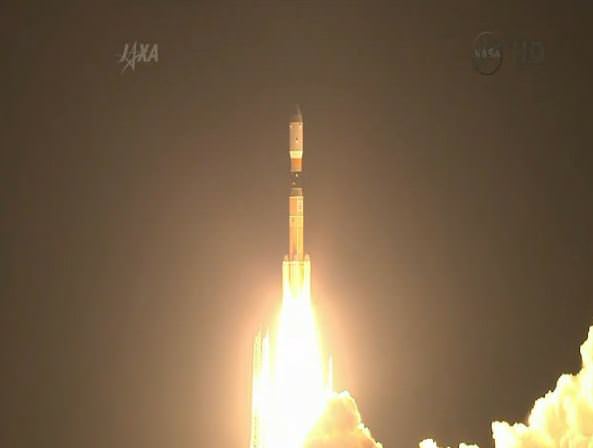More supplies and a brand new talking robot for International Space Station. The Japan Aerospace Exploration Agency’s (JAXA) HTV-4 Transfer Vehicle launched successfully from the Tanegashima Space Center in Japan, and will rendezvous in six days with the ISS. On board are 3.6 tons of dry cargo, water, experiments and spare parts to the International Space Station. The new robot, a .34 meter (13.4-inch) robot named Kirobo, is designed to be able to have a conversation with its astronaut crewmates and to study how robot-human interactions can help the astronauts in the space environment.
Unlike a Russian Progress vehicle which docks automatically, the HTV-4 will be captured by the Canadarm2 and berthed to the Harmony module. The cargo spacecraft will be commanded to fly within about 40 feet and then hold where Flight Engineer Karen Nyberg will operate the Canadarm2 during the approach and rendezvous of the Kountouri supply vehicle.


Will JAXA ever fly a 4-6 orbit rendezvous to the ISS? The new short flights make sense, saves consumables anyway….
Everyone questioning why it takes days to get the the space station, should try out the Kerbal Space Program.
1. First you have to reach the desired hight.
2 A second burn later in the flight to circularize your orbit.
3. Then match the inclination of your orbit to the ISS orbit (You have to wait until you are at the right spot).
4.Then you decrease or increase the orbit in order to slow down or catch up.
5.Then you must have the burn to bring back to the IIS spot at the right time. (This can take many orbits before you are on the correct spot to start the burn)
6.Once near the ISS you have to slow the burn to make the orbit the same as the ISS.
7.Now you have to get closed to the ISS, so burn in the direction of the ISS to come closer.
8.And finally break speed to get to the same speed as the ISS.
9. Finally RCS thrusters can do their work to bring in the cargo.
In March a Russian rocket sent a crew to ISS in only 6 hours and 4 orbits.
http://www.space.com/20099-space-station-crew-fast-spaceflight.html
But it is still 6 hours for something that is only a couple of 100 km’s up.
But the moment you depart has a huge impact on the the time to get there.
It is easier for Russian to make this jurney in 6h than for Japanese. Inclination of the ISS’s orbit is 51.6° and it is optimized for launches from Baikonur, spaceport that Russia uses. If Japanese wanted to make 6h journey to ISS, they would have to spend insane amounts of fuel to do that, and that is not cost efficient, cause it cost few thousand dollars to place 1 kg in orbit.
Congratulations to the folks at JAXA. Great launch.
tinyurl.com/lr69xbu